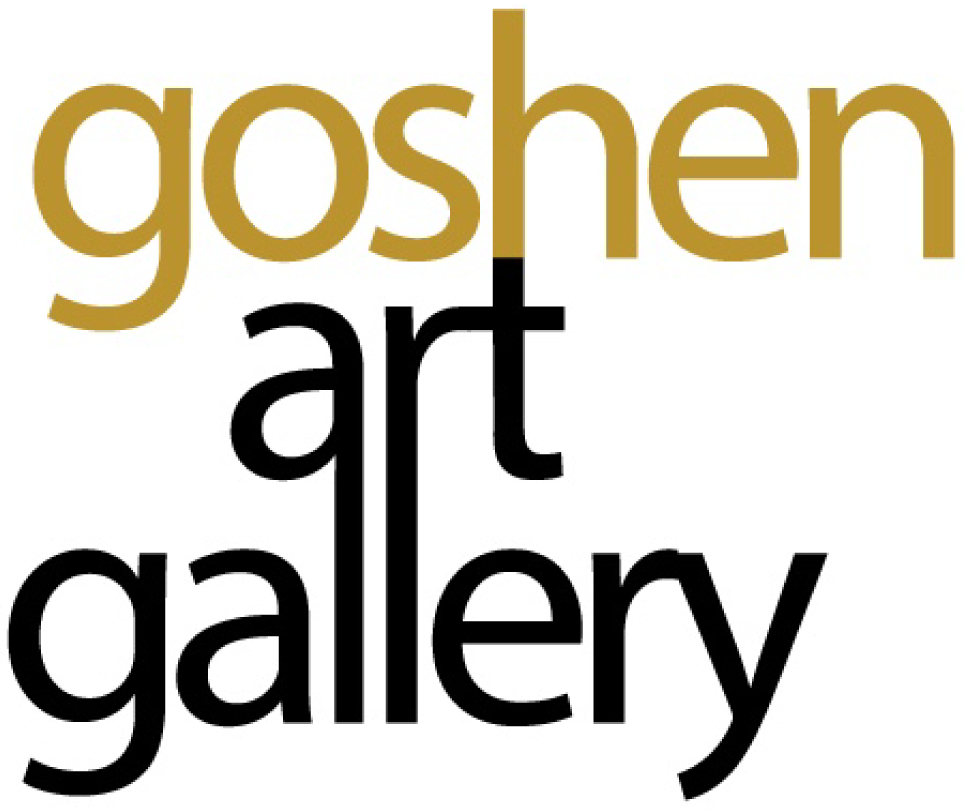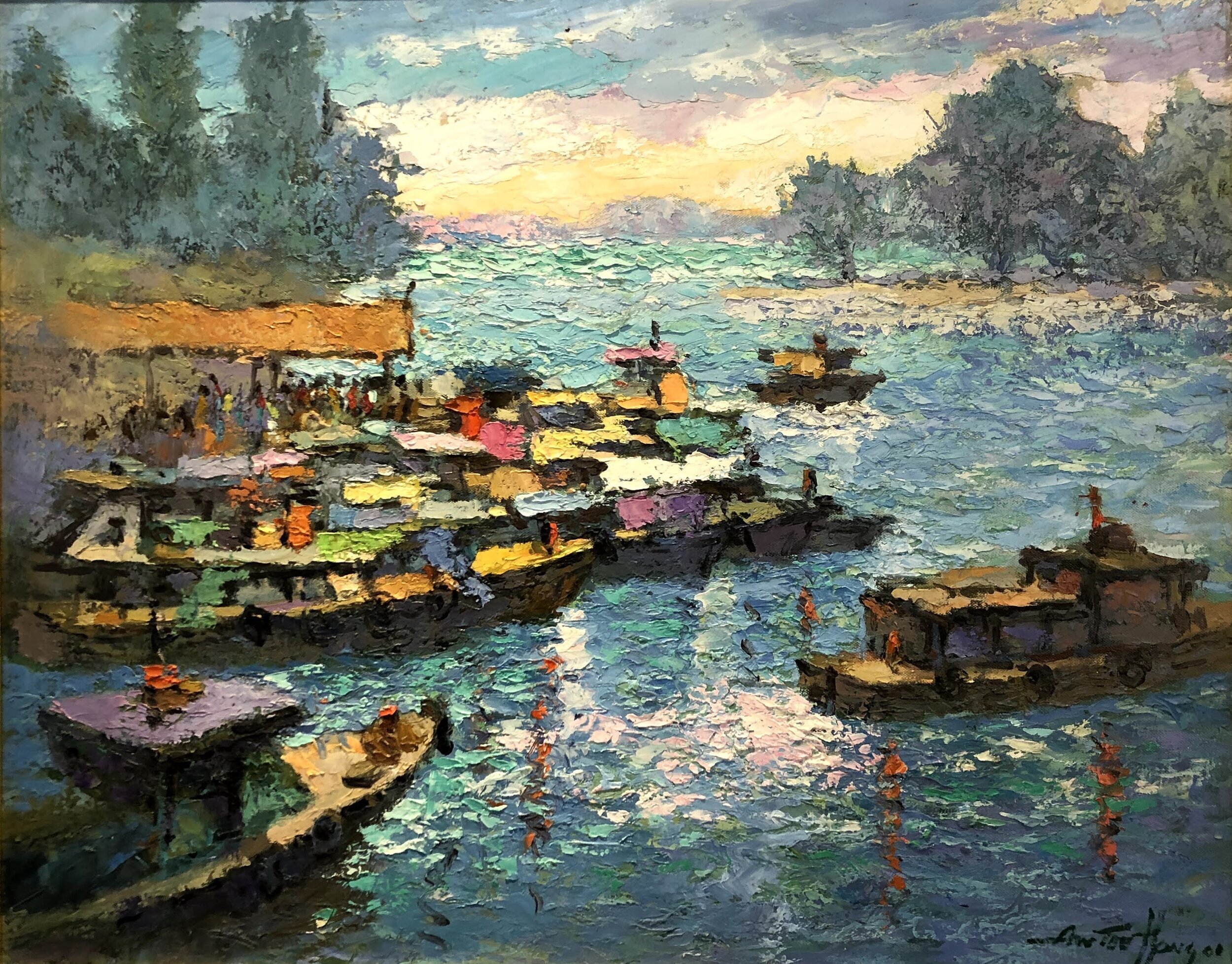Artist: Aw Tee Hong (b. 1931)
Mr Aw Tee Hong is a Singaporean artist who is known for his works in oil and acrylic, watercolour, Chinese ink, charcoal and sculptures. Born in Wenchang, Hainan province, China, Mr Aw migrated with his parents to Kelantan, Malaysia at the age of 8 and later relocated to Singapore in 1950. Here, he studied art at the Nanyang Academy of Fine Arts and later went on to pursue higher education in art at the China Central Academy of Fine Arts in Beijing, China in 1956.
Mr Aw collaborated with the Singapore Tourism Promotion Board (STPB) during the1980s to create and develop a range of Chinese Opera Masks which later became iconic souvenirs that helped promote Singapore as a tourist destination. Additionally, Mr Aw was often invited by STPB to participate in trade shows in various countries across Asia, the Middle East and Europe to demonstrate the uniqueness and richness of Singapore Art. In October 2019, one of his oil paintings fetched a record price of SGD 198k at Sotheby’s Auction in Hong Kong.
Known for his art themed towards Singapore heritage, Mr Aw’s knowledge of and sensitivity to colours blend together to form lustrous, luminous pieces that captivate art goers. Singapore is indeed privileged to have Mr Aw Tee Hong as a promoter of our historical landscapes and cultural diversity.
Changi Jetty
While titled Changi Jetty, Mr Aw’s painting is of the old pier before its refurbishment in recent years. Atop the glossy waters sits wooden boats with passengers and fishermen donned in colourful attire as they set out to begin their day’s work. The early sunlight casts a pinkish yellow hue in the radiant sky as fishermen who awake at dawn row to distant waters to catch fish. Oil paint is best for capturing images with a depth of colour, and the medium’s flexibility allows it to form thin glazes as seen from the white sheen across the sea water that reflect the Sun’s rays and dense thick impasto of the lively human figures in their boats.
The saturation to Mr Aw’s painting gives it a quaint look that stimulates urban art appreciators living in the modern world who rarely experience such sights. Images of the upgraded Changi Jetty are equipped with faster boats, safer platforms, and cleaner shelters, yet it seems to lack a flavour, a certain character. Despite impressions of old Changi Jetty being dirty and unsafe, the occasional kampung chicken running about and aunties and uncles loitering around wind-beaten shop signs gave the harbour a personality that was felt in the hearts of locals. This unidentified feeling of comfort and familiarity may have been a delayed nostalgic response towards Singapore’s swift modernisation that swallowed many relics of a bygone age. The new, sanitised ferry terminal and its antiseptic ‘improvements’ may have reduced the place to a space, the latter lacking a localised, human, touch. Upon seeing Mr Aw’s Changi Jetty, locals may have only been jolted in appreciating the legacies of its colonial military heritage when it was too late.
Life in a Kampung
Life in a kampung is often idealised as a one without worldly worries in a place of perpetual leisure and relaxation. In reality, the removal of city stresses and emotional alienation is replaced by livelihood pressures and rural inconveniences in the village. Mr Aw’s plain tones and broken colours add a realism to Life in a Kampung, and the functional, faded shack built on dusty, grubby earth shows a simplicity that is both a boon and bane to country living. Even so, the painting still shows an unhurried, quiet beauty to kampung life with its closer proximity to Nature. The truth is, living a humble kampung life after experiencing the abundances of the urban city, the case for many of us, is not for the faint of heart.
Graceful Fruits Seller
“Flowing skirts, scarfed head
She picks a cherried fruit
Laughing maidens gather round
A graceful sight to salute”
Mr Aw Tee Hong’s exotic painting with bare-chested ethnic women in traditional costume selling tropical fruit catches is appealing for many reasons. At the backlit marketplace, the women display and arrange fruit as the lowering sun floods their surroundings with its warm rays. Even when engaging in commercial activities, the exquisite women remain elegant and unconscious of their admirers. Graceful Fruits Seller is a still glimpse into the robust life of an ethnic woman who temporarily departs from the domestic arena and joins her sex in communal economic activities. Mr Aw’s seamless brush strokes and even mixture of the array of colours produce a coherent piece as graceful as its subjects.
Bustling Chinatown
As the people hurry to and fro the streets of Chinatown, the free flowing individuals blur into the hazy, faceless crowd. The green, red, and white umbrellas that shelter small street stalls as locals chatter and bargain over necessities and trivialities. Mr Aw is able to transform this typical scene into a distinguished piece, no easy feat indeed. Bustling Chinatown is unparalleled in its sophistication with its asymmetrical landscape of old buildings and jostling strangers. Edith Piaf’s “La Foule” of two people who brush past each other but are fated for a short-lived encounter in the clustered mob comes to mind when viewing this painting. The tertiary colours of Mr Aw’s painting create a storybook-like setting as swarms of passers-by disappear into the distance, as if they were charmed by the mischievous pied piper.
Since his twenties, Mr Aw Tee Hong has lived and worked in Singapore. As a witness to the seismic shifts Singapore has undergone since its merger with Malaysia followed by its independence in 1965 and whirlwind success. With reference to the hierarchy of fine art, history paintings of historically important subjects like Changi Jetty and Life in a Kampung that capture the essence of time, and genre paintings like Graceful Fruit Sellers and Bustling Chinatown that infuse scenes of everyday life with subtle meaning would acquire a high status in the Academic realm. Mr Aw excels in creating paintings that are antique looking but not dated. It is no wonder that his works are so popular among locals and foreigners alike. From Changi Jetty to Bustling Chinatown, Mr Aw Tee Hong gives his viewers a taste of the past and that of a distinct reality that leaves them clambering for more.




